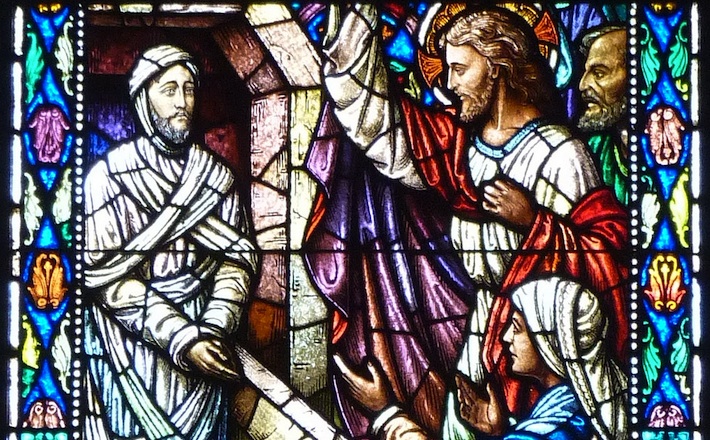Commentary on Revelation 21:1-6a
Few preachers decide to preach on Revelation. It is an enigmatic book, and preachers and pew-sitters alike often feel ambivalent about it.
Yet our reluctance within traditions that use the RCL to approach Revelation has left a theological and interpretive gap that has been filled by Christian and popular American traditions who see the text as a script for the end of time. It is a script that emphasizes the exploitation of creation, abominable violence against people who are not a certain kind of Christian, and rescue from death and destruction for a select few. From Late Great Planet Earth to Ghostbusters to the Left Behind series of books and movies, this script is everywhere in popular culture. More insidiously, this popular interpretation has influenced international policy (moving the U.S. Embassy to Jerusalem is part of the script), deregulation of ecologically destructive industry (earthquakes in Oklahoma from fracking are part of the script), and militarism (reinvigoration of nuclear proliferation is part of the script).
While many preachers balk at preaching politics, particularly on an All Saints Sunday that falls right before an important national election, I wonder if even the usual approach to this holy festival draws on parts of the Revelation script. Many times, the remembrance and celebration of the saints who have died during the past year focuses on their removal from our realm, the earthly realm, to the realm where God is. We represent our beloveds as those who have “gone home to be with God,” or “those whom God has received,” or “our beloveds in heaven” — as if those who have died are in a faraway heaven where God dwells. Yet this faraway heaven creates distance between God’s presence and our own earthly lives. Certainly grief and remembrance might feel like the absence of God in such a way that we long for rescue or at least escape from the everyday pain and hardships. Sometimes we grasp at the vision of our beloveds rescued from this life, living with God in the New Jerusalem without realizing the implication of the script — that we have been left behind and God is far away from us in our grief.
This pericope need not follow this script at all. We see a vision of the new Jerusalem coming down within a renewed creation. Notice that the holy city is coming down to earth. God is not in a far-off heaven. God’s dwelling place is not a vision of perfection apart from our present reality.1 Rather, Revelation gives us an image of God’s homecoming into our world — a homecoming that not only destroys death but also renews the world within the creation. While the image uses an analogy that has its roots in the patriarchal commodification of women (verse 2), the sense of God’s carefully attended city coming to earth is a strong antithesis to the idea that God rescues us from an abandoned earth. John proclaims that “the home of God is among mortals” (verse 3). God comes into mortality, into our frailty, to dwell with us. God wipes tears, soothes grief, and heals pain because of the renewal of the earth, not because of its destruction.
For All Saints Sunday, the hope from this reorientation to God’s presence among mortals comes in the remembrance of holy ones who, like us, lived their mortal lives with God in their midst. For this reason, communities could include in the celebration of the saints those who have been baptized in the previous year — the newest saints living in God’s home, right here in our midst.
Of course, this perspective depends on a flip in our usual framework for reading Revelation. So often we read it as predictive of events to come. Yet the accepted scholarly definition of apocalyptic literature2 describes texts like Revelation (and the dozen or so other early Christian and Jewish texts drawing on similar themes) as revealing rather than predictive. In other words, the vision John the Seer describes in these verses is not a view of the future from a crystal ball. Instead John’s vision lets us see God’s home among us without the veil of human destruction and violence. The passing away of the first things (verse 4) and the creation of a new heaven and new earth (verse 1) need not be understood as the necessary result of obliteration. In fact, the verb used in verse 4 is aperchomai, meaning “to go away, depart, or cease,” rather than apollumi, which would indicate destruction and death. The new heaven and the new earth are not replacements for the world where we live but rather a renewal of the creation in the space where God has always been — among the saints from every generation and era.
Preaching Revelation on All Saints Sunday gives us the opportunity to think about God’s power of presence in life, in death, and in life after death — God’s power of presence in beginnings and in endings. The good news rings true when we call the names of the saints across the veil between life and death into remembrance — God’s home is here, among mortals, in the renewed creation.
Notes
1 I am indebted to Barbara Rossing’s continued and creative work for much of my own scholarship on Revelation, particularly, The Rapture Exposed: The Message of Hope in the Book of Revelation (Boulder, Colo.: Westview, 2004).
2 John J. Collins defines an apocalypse as “a genre of revelatory literature with a narrative framework, in which a revelation is mediated by an otherworldly being to a human recipient, disclosing a transcendent reality which is both temporal … and spatial.” See Collins, The Apocalyptic Imagination: An Introduction to Jewish Apocalyptic Literature, 2nd ed. (Grand Rapids: Eerdmans, 1998), 5.


November 4, 2018